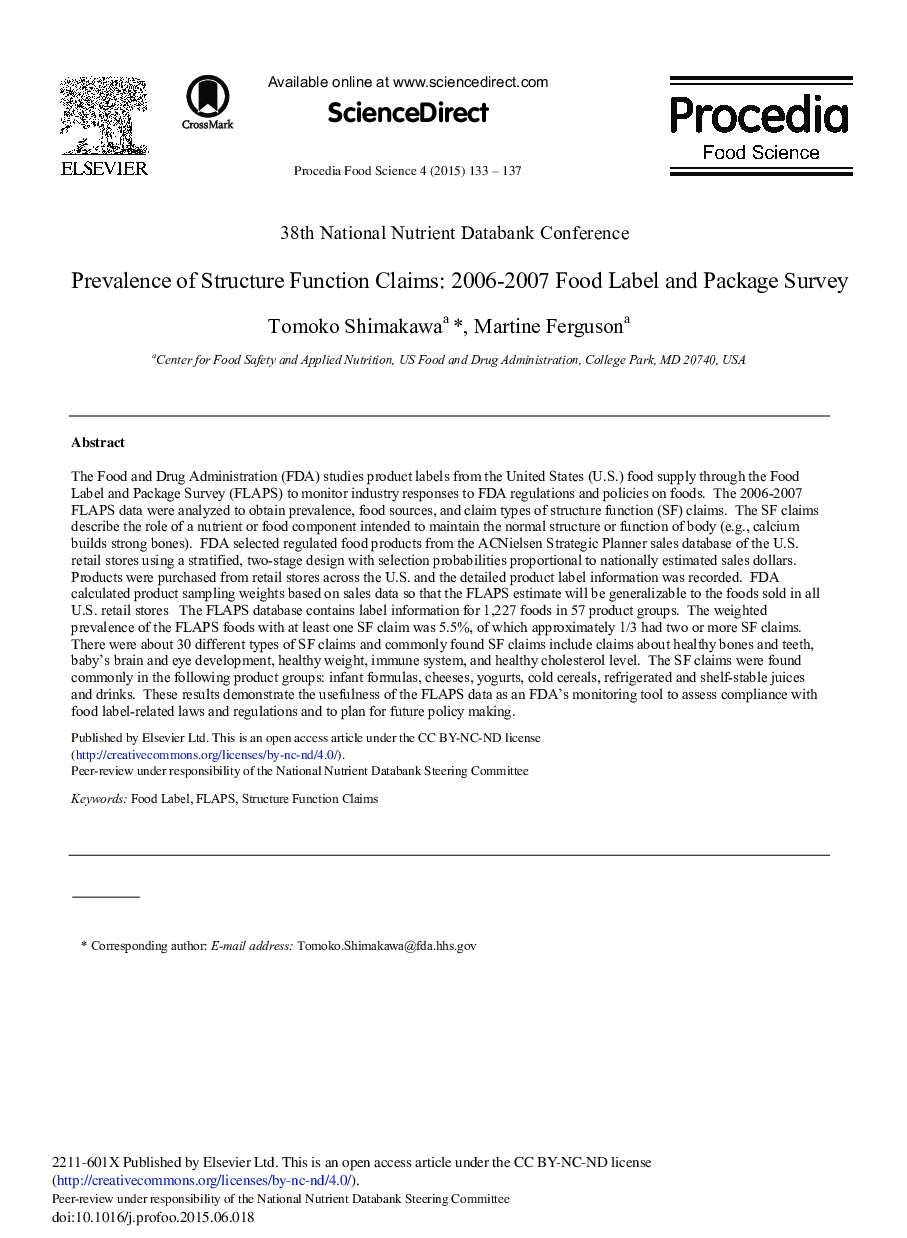| Article ID | Journal | Published Year | Pages | File Type |
|---|---|---|---|---|
| 1264833 | Procedia Food Science | 2015 | 5 Pages |
The Food and Drug Administration (FDA) studies product labels from the United States (U.S.) food supply through the Food Label and Package Survey (FLAPS) to monitor industry responses to FDA regulations and policies on foods. The 2006-2007 FLAPS data were analyzed to obtain prevalence, food sources, and claim types of structure function (SF) claims. The SF claims describe the role of a nutrient or food component intended to maintain the normal structure or function of body (e.g., calcium builds strong bones). FDA selected regulated food products from the ACNielsen Strategic Planner sales database of the U.S. retail stores using a stratified, two-stage design with selection probabilities proportional to nationally estimated sales dollars. Products were purchased from retail stores across the U.S. and the detailed product label information was recorded. FDA calculated product sampling weights based on sales data so that the FLAPS estimate will be generalizable to the foods sold in all U.S. retail stores The FLAPS database contains label information for 1,227 foods in 57 product groups. The weighted prevalence of the FLAPS foods with at least one SF claim was 5.5%, of which approximately 1/3 had two or more SF claims. There were about 30 different types of SF claims and commonly found SF claims include claims about healthy bones and teeth, baby's brain and eye development, healthy weight, immune system, and healthy cholesterol level. The SF claims were found commonly in the following product groups: infant formulas, cheeses, yogurts, cold cereals, refrigerated and shelf-stable juices and drinks. These results demonstrate the usefulness of the FLAPS data as an FDA's monitoring tool to assess compliance with food label-related laws and regulations and to plan for future policy making.
